If your saw has a standard 3/8-inch pitch, you will need to file the cutters at a 45-degree angle. For each cutter, use a round file that is the same diameter as the cutter’s depth gauge. Place the file in the gullet between two cutters and push forward while maintaining the 45-degree angle.
File only the front face of each cutter; do not touch the back face or rakers.
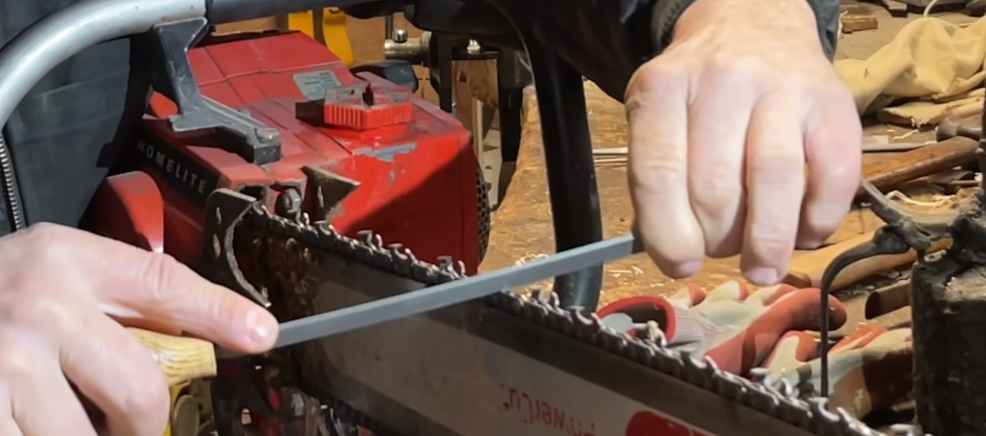
Square File Chainsaw Chain Vs Round
If you’re a chainsaw user, then you know that there are two main types of chainsaw chain – square file and round file. But which one is better? In this blog post, we’ll take a look at the pros and cons of each type of chain to help you decide which one is right for you.
Square file chainsaw chain has been around longer than round file chain, so it’s had more time to prove itself. It’s also the standard type of saw chain used by most professional loggers and arborists. The main advantage of square file chain is that it cuts faster and cleaner than round file chain.
That’s because the teeth on square file chain are sharpened at 90 degrees, which provides a more aggressive cutting action. Square file chain also holds its edge longer before needing to be sharpened.
The downside of square file chains is that they can be more difficult to sharpen than round files, and they’re also not as good at cutting through dirty or frozen wood.
If you regularly cut through dirty or frozen wood, then round file chains are probably a better choice for you. Round file chainsaw Chainsaws were designed as an all-purpose tool for use in logging operations however; over time their design has changed little making them ideal for home users as well.
Their popularity among professionals waned with the advent of dedicated felling saws such as bucking saws however; they continue to find favor with arborists who value their versatility.
One significant advantage that Round File Chainsaws have over their Square counterparts is that they cause less damage to the tree due to the way in which they cut (cleaner kerf).
This is especially important when working close to power lines or other sensitive areas where damaged trees could pose serious safety hazards.
Double Bevel Chainsaw File
If you’re a homeowner with a few trees on your property, chances are you’ve got a chainsaw. And if you’ve got a chainsaw, then you need to know how to keep it sharp. That’s where the double bevel chainsaw file comes in.
This type of file is designed specifically for maintaining the sharpness of your saw’s cutting teeth. Here’s a quick rundown on how to use a double bevel chainsaw file:
1. Start by removing the bar cover and spark plug from your saw. This will give you clear access to the chain.
2. Place the file against one of the teeth and push it forward while keeping the angle consistent with the rest of the teeth. Use light pressure and make sure that you’re only filing in one direction – never back and forth.
3. Repeat this process on all of the teeth, making sure to switch sides (left to right) every few strokes so that you evenly sharpen both sides of each tooth.
4 Finally, re-install the bar cover and spark plug, and test out your newly sharpened chain!
Can You Square File a Round Chain?
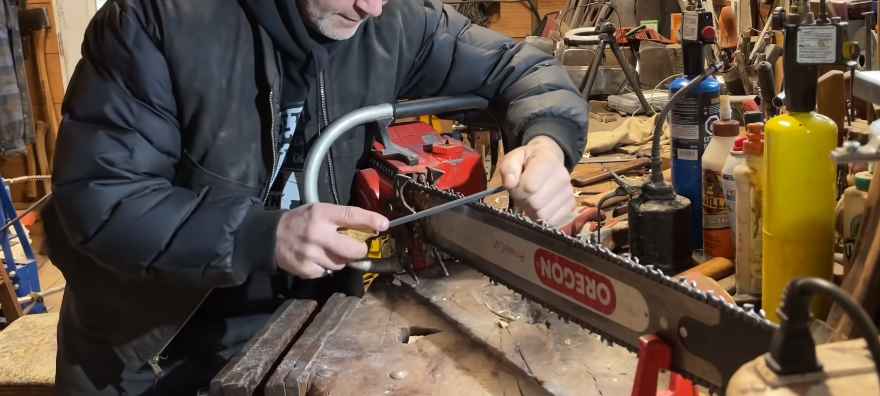
If you’ve ever wondered if you can square file a round chain, the answer is yes! Although it may take some time and patience, it is possible to get a perfectly square edge on your round chain. Here’s how:
1. Start by securing your chain in a vise or similar device. This will keep it from moving around while you work.
2. Use a standard square file to file down one side of the chain link. Be sure to apply even pressure so that the file doesn’t slip and create an uneven edge.
3. Repeat step 2 on the other three sides of the link until all four sides have been filed evenly. At this point, you should have a perfect square edge on your chain!
Chainsaw Square File
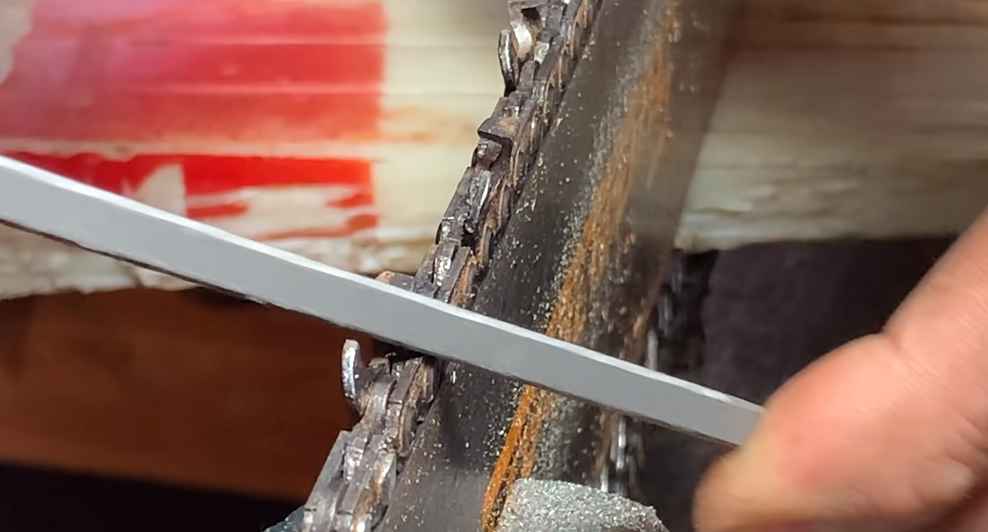
If you’re a chainsaw user, then you know that a sharp saw is a safe saw. And one of the best ways to keep your saw sharp is to use a square file.
In this post, we’ll take a look at what a square file is, how to use it, and some of the benefits of using one.
A square file is simply a file that has four sides that are all equal in length. This allows you to get into all four corners of your chainsaw’s teeth, making sure each tooth is filed evenly. To use a square file, start by finding the corner of the tooth that needs filing.
Place the file flush against the tooth and push forward while keeping the file level with the surface of the tooth. File each side of the tooth until it’s nice and sharp! One of the benefits of using a square file is that it ensures each tooth is filed evenly.
This helps prevent your chainsaw from becoming unbalanced and makes for a smoother cut. Additionally, filing with a square file requires less effort than filing with other types of files (such as round files), so you can save your energy for other tasks!
Hexagon Chainsaw File
If you’re a chainsaw user, then you know that having a sharp saw is important. A dull saw can be dangerous and it makes your job harder. That’s why it’s important to have a good file on hand to keep your saw sharp.
A hexagon chainsaw file is a great option for those who want a reliable and easy-to-use file. This type of file is designed to fit into the teeth of your chain so that you can quickly and easily sharpen them. The hexagon shape of the file helps to grip the chain tightly so that you can get a good, even sharpen.
One of the best things about using a hexagon chainsaw file is that it’s very easy to use. Even if you’ve never filed a chainsaw before, this type of file makes it simple and straightforward. Just insert the file into the tooth and then push or pull it through until the tooth is sharpened.
It really is that easy!
Best File for Square Ground Chain
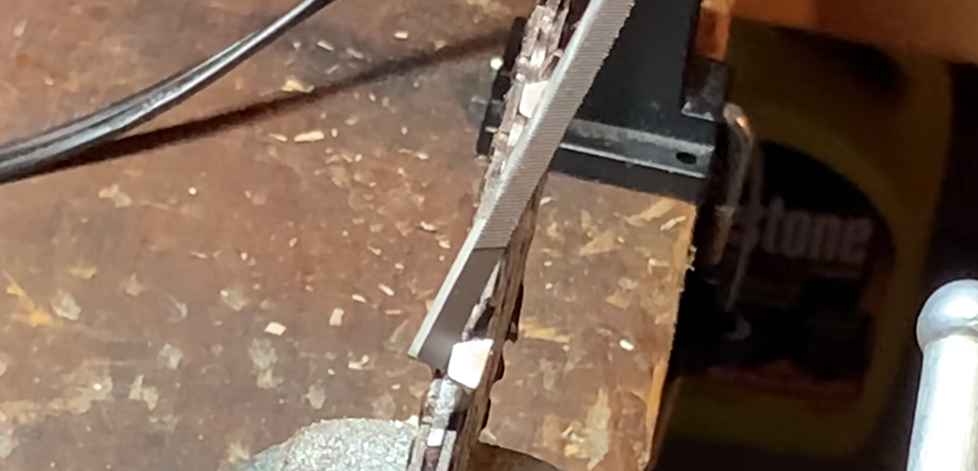
There are a few things to consider when selecting the best file for square ground chain. The first is the type of file. Second is the size of the file.
And third is the material from which the file is made. Type of File: The three most common types of files are double-cut, single-cut, and rasp-type files. Double-cut files have diamond-shaped teeth that cross in two directions (crisscross).
This type of file quickly removes metal but can also leave fine scratches on the workpiece. Single-cut files have linear rows of teeth that only cut in one direction. They are slower at removing metal than double-cut files but leave a smoother finish.
Rasp-type files have coarse, sharp teeth that look like those on a wood rasp. They rapidly remove metal but create a very rough surface finish. Size: The second consideration is size.
There are many sizes and shapes of files available, but for general purpose use, these can be divided into three groups: flat, half round, and round files.
Flat files are used to work on flat surfaces or edges while half round files can be used on both flat and curved surfaces. Round files, as their name suggests, are used to work on circular or cylindrical surfaces such as pipes or rods.
Material: Files are generally made from either high carbon steel or tungsten carbide. High carbon steel files are less expensive than tungsten carbide but wear out more quickly and need to be replaced more often.
Tungsten carbide files last much longer than high carbon steel ones but they cost more initially.
Chainsaw Square Grinder
If you’re looking for a powerful tool to help you tackle even the most challenging projects, look no further than the chainsaw square grinder. This amazing tool can quickly and easily take on a variety of tasks, making it a must-have for any serious DIYer or professional contractor.
Whether you need to remove tree stumps, grind down concrete, or cut through metal pipes, the chainsaw square grinder can do it all.
And because it’s so versatile, it’s also one of the most popular tools among professionals in a variety of industries. But what makes the chainsaw square grinder so special? For starters, its unique design allows it to be used in both horizontal and vertical positions.
This means that you can reach even tight spaces and angles that other power tools simply couldn’t handle. The chainsaw square grinder is also outfitted with an impressive 4 horsepower motor that provides plenty of power for even the toughest jobs.
Plus, its extra-long 14-inch blade ensures that you can make quick work of even the largest projects.
So if you’re looking for a tool that can help you tackle just about anything, consider investing in a chainsaw square grinder. It’s certain to become one of your go-to tools for years to come!
Can You Square Grind Chainsaw Chain?
Chainsaw chains can be sharpened with a file, but for the best results you should use a grinder. A chainsaw chain is made up of many small cutting teeth, and each tooth has two angles that need to be ground:
the top angle (also called the rake angle) and the side angle (also called the flank angle). The top angle determines how deep your cut will be, while the side angle affects how wide your cut will be.
Most people use a round file to sharpen their chainsaw chains, but this only grinds one side of each tooth. This leaves the other side of each tooth dull, which can cause your saw to bind in the wood you’re cutting. A better way to sharpen your chain is with a flat file or a grinding wheel.
These will grind both sides of each tooth at once, leaving all of your teeth sharp and evenly balanced. If you’re using a grinding wheel, make sure it’s rated for use on steel before you begin. You’ll also want to wear eye protection and gloves to protect yourself from flying sparks.
To sharpen your chain with a grinding wheel, start by holding the end of the chain against the wheel with light pressure. Slowly move the chain forward so that all of the teeth are evenly ground. Remember to keep moving-if you stay in one spot for too long you could overheat and damage your saw chain.
Once all of the teeth are ground, turn off the grinder and check your work by running your fingers along the length of the chain-all of the teeth should feel sharp and uniform.
If any teeth are still dull or misshapen, go back over them with light pressure until they’re corrected.
How Do You Square a Chainsaw Bar?
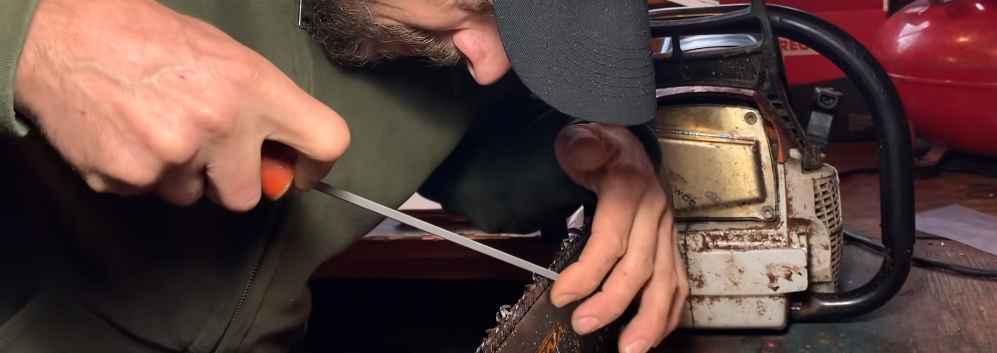
If you’re a chainsaw user, sooner or later you’ll need to square the end of your saw’s bar. This is a simple process, but one that requires a bit of know-how. Here’s how to do it:
First, make sure your saw is properly secured in a vise or similar device. You don’t want it moving around while you’re working on it. Next, take a file and run it along the length of the bar, making sure to go from the tip all the way back to the rear end.
You want to make sure the file is nice and level, so take your time with this step. Once you’ve gone over the entire bar with the file, it’s time to move on to sandpaper. Start with a coarse grit and work your way up to finer grits until you have a smooth surface.
Again, pay close attention to detail here – you want everything nice and even. Finally, use a cloth or brush to remove any debris from filing or sanding before calling it quits. And that’s all there is squaring your chainsaw bar!
What is the Best Angle to File a Chainsaw?
There are a few different opinions on what the best angle to file a chainsaw is, but most people seem to agree that somewhere between 20 and 30 degrees is ideal. The important thing is to make sure that the filed tooth has a sharp edge all the way around, so that it can cut through wood smoothly.
One thing to keep in mind is that the more frequently you use your chainsaw, the more often you will need to sharpen it.
When you’re only using it for light-duty jobs around the house, then once or twice a year should be sufficient. However, if you’re using it regularly for heavy-duty work like cutting down trees, then you’ll need to sharpen it more often – perhaps as often as every couple of weeks.
If you’re not sure how to properly sharpen a chainsaw, there are plenty of instructional videos and articles online that can help walk you through the process step-by-step.
And of course, if you’d rather not do it yourself, there are always professional sawyers who would be happy to take care of it for you.
How Do You File the Rakers on a Chainsaw Chain?
If you use a chainsaw regularly, it’s important to keep the chain sharp. Filing the rakers is one way to do this. Here’s how to do it:
1. First, make sure your chainsaw is turned off and the chain is not moving. Then, open up the file guide so you can access the teeth.
2. Next, take your file and start at the bottom of one tooth. File in an upward motion until you reach the top of the tooth (or as close to the top as you can get).
3. Repeat this process on all of the teeth on one side of the chain before moving on to filing the other side.
4. Once you’re finished filing all of the teeth, close up the file guide and put your chainsaw away.
FASTEST CHAINSAW CHAIN?! How to square file a chainsaw by hand.
Conclusion
A chainsaw is a useful tool for many tasks, including cutting down trees and trimming branches. However, if the chain on your chainsaw becomes dull, it can make the job much harder than it needs to be. Luckily, there is a way to sharpen the chain yourself using a file.
First, you will need to find a way to secure the saw so that it doesn’t move while you’re working on it.
Next, use a round file to sharpen each tooth on the chain. Start at the top of the tooth and file downwards in an outward motion.
Repeat this process until all of the teeth are sharpened. Finally, use a depth gauge file to ensure that each tooth is the same length. Doing this will help keep your chainsaw running smoothly and efficiently.